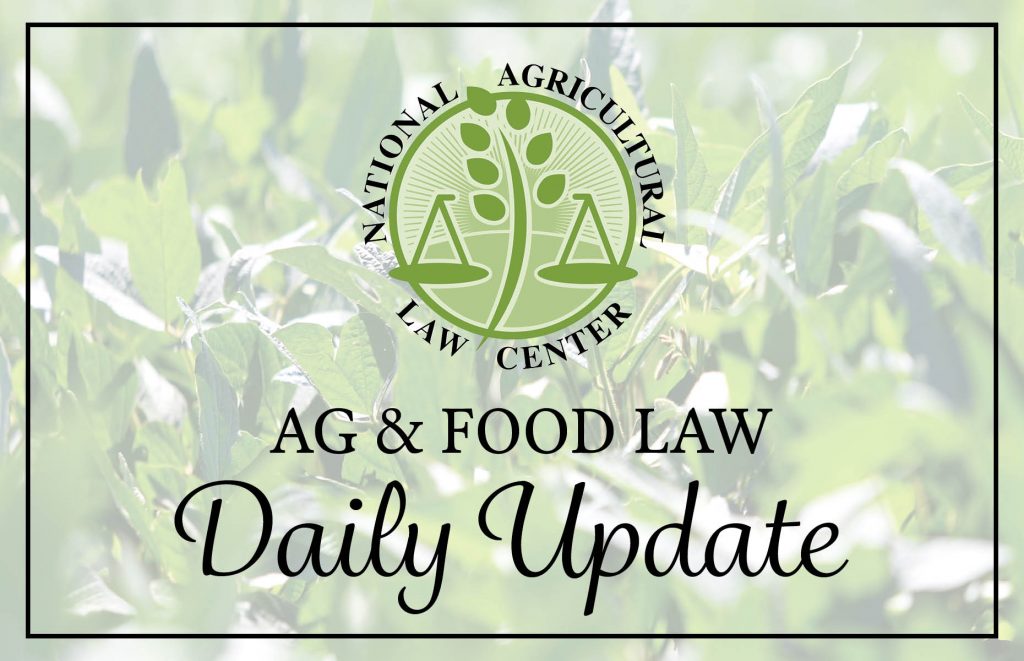A comprehensive summary of today’s judicial, legislative, and regulatory developments in agriculture and food. Email important additions HERE.
JUDICIAL: Includes zoning law
In Hochstein v. Cedar Cty. Bd. of Adjustment, 305 Neb. 321 (Neb. 2020), the Supreme Court of Nebraska considered whether the construction of a new residence with an agricultural intensive district was a “non-farm residence” under the zoning regulations. Ultimately, the court concluded that the Board of Adjustment’s (“Board”) determination that the new residence was a farm residence was a proper interpretation of the zoning regulations. The underlying dispute involves the plaintiff, Frank Hochstein, who operates a 4,500 animal unite feedlot that falls within the definition of a livestock feeding operation (“LFO”). Hochstein’s neighbors, Mark and Carla Goeden, are involved in an agricultural operation which is partially conducted on land that directly neighbors Hochstein’s LFO. The Goedens submitted an application for a zoning permit to construct a new house on their farm. The permit was approved. Hochstein appealed the permit, arguing that the permit was for a “non-farm residence” and that the applicable zoning regulations provided that all new non-farm residences should not be located “closer to existing LFO’s than the setback distances for LFO’s from existing residences on the matrix set out above.” According to Hochstein, the zoning regulations required a one-mile setback for all non-farm residences, but the Goedens’ proposed residence was located 3,300 feet from Hochstein’s LFO.
The Board affirmed the grant of the permit, reasoning that the Goedens’ proposed residence was located on a farm, and therefore was a farm residence that did not require a one-mile setback. Hochstein appealed that decision to the state court, which also concluded that the Goedens’ proposed residence was a farm residence because it was located on a farm. Hochstein then appealed that decision to the Supreme Court of Nebraska. The court reviewed the applicable zoning regulations, noting that the regulations did not define the terms “non-farm residence” or “farm residence.” Because the zoning regulations did not define those two terms, the court concluded that it was within the discretion of both the Board and the lower court to reasonably interpret the term “farm residence” as including a residence built on a farm. Therefore, the court upheld the lower court’s judgment.
